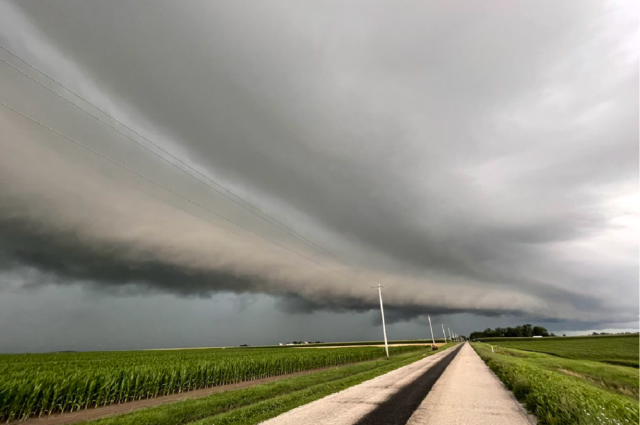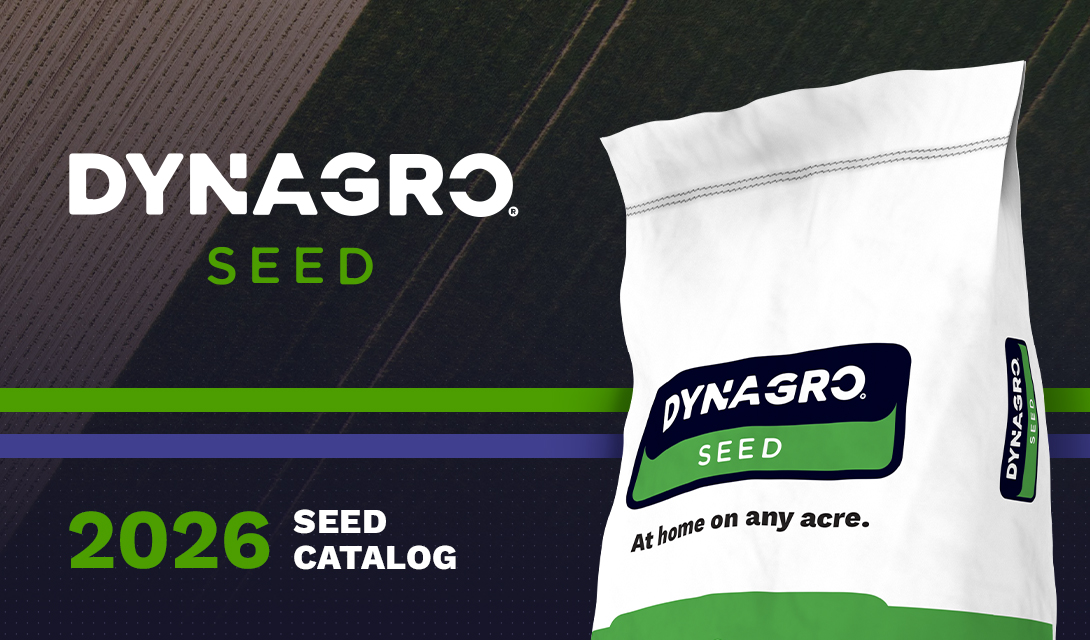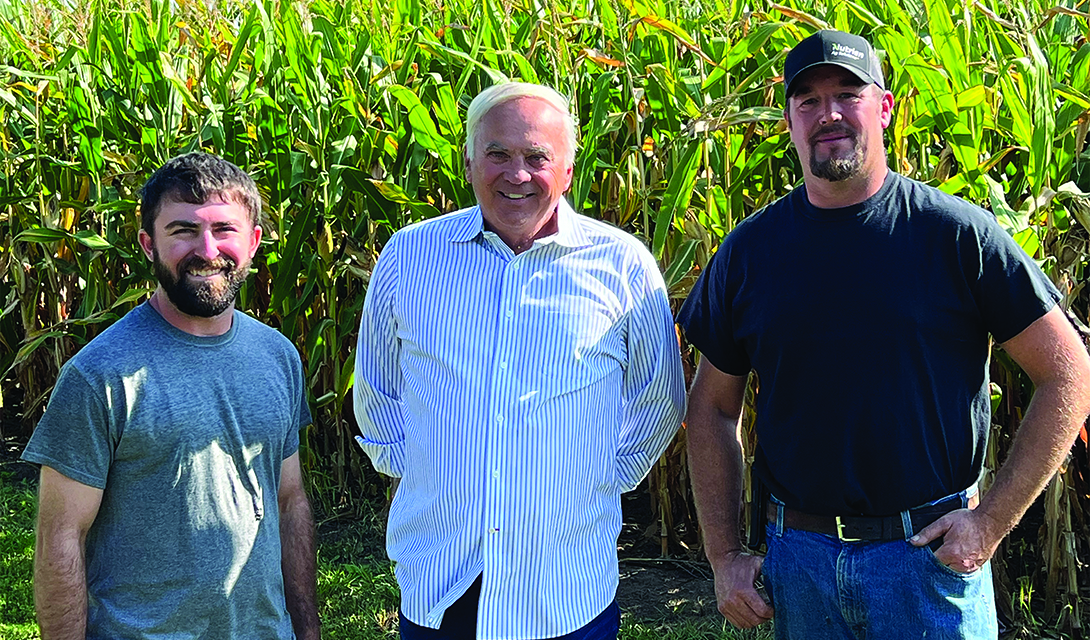How to Assess Hail Damage
Each year hail damages thousands of corn acres in the western corn belt. Early hailstorms are usually not as devastating to our corn crop because it is usually not large enough to sustain substantial damage (out of the ground for less than three 2. weeks) or in some cases has not yet been planted.
However, corn that has been out of the ground for more than three weeks, when the plant is in the 5 - 7 leaf stage, (which is about 8 inches high), due to internode elongation, has the growing point above the ground. From the 5 - 7 leaf stage through tasseling is when the corn plant is at greatest risk to hail. The tasseling stage is the most critical period.
Although we have no control over when or where it hails, we are faced with making difficult decisions on 4. what to do with fields that have been damaged by hail. Often times the quality of decisions we make after a hail storm, especially if replanting is an option, are the most important decisions we make all growing season. Finally, to the extent you may have insurance coverage for hail damage to your crop; you may need to confer with your insurer before taking any actions that could affect an insurance claim you may have. Listed below are some guidelines to follow when replanting is still an option.
Estimating Total Yield Loss
Total corn yield loss from hail damage is estimated by adding the expected yield loss caused by stand reduction, the expected loss caused by defoliation, and the expected loss caused by direct ear damage.
Determining Yield Loss Due to Stand Reduction
- Try to keep emotion out of your decision making process.
- Wait at least one week after a storm to determine whether a plant will live or die. By this time living plants will have started to regrow and dead plants will be easier to pick out due to discolored tissue.
- When making replant decisions, do not count plants that have disease that has entered through areas of hail damage, plants where the whorl is tied or other plants in question. Obviously, some of these plants may live, but that will not be known until later.
- Split the stalks (lengthwise) of many damaged plants and inspect the growing point. If the growing point is healthy, (a white-yellow color), the plant should live. If the growing point is not healthy, (discolored and or mushy), assume the plant will die or at best be non- productive.
- On plants where the whorl is “tied up”, lift up through the whorl with your finger, if the leaves come loose without injuring the plant, count the plant as a survivor.
- Get the best advice possible. If you have questions, ask your Dyna-Gro Seeds crop consultant or agronomist. They deal with hail each growing season. An individual farmer may not deal with hail often enough to make a sound decision.

Use the Table below to Estimate Yield Potential Due to Stand Loss
For example, if your corn was planted on April 20, and you determine hail has reduced the stand to 18,000 plants per acre, it can yield 87% of a full stand. Although it may seem funny, in general 75% of a normal stand can still produce 90% of a normal yield and 50% of a normal stand can produce 75% of a normal yield.
Listed Below Are Some Limitations of the Table
- You may consider a number lower than 30,000 an optimum stand, adjust accordingly.
- Stands after hail are usually not uniform; the table is designed for optimum spaced stands.
- Some hybrids have more ability to flex ears than others do.
- Table does not give you replanting costs.
- Table does not tell you what herbicide is down, which may restrict replanting with soybeans.
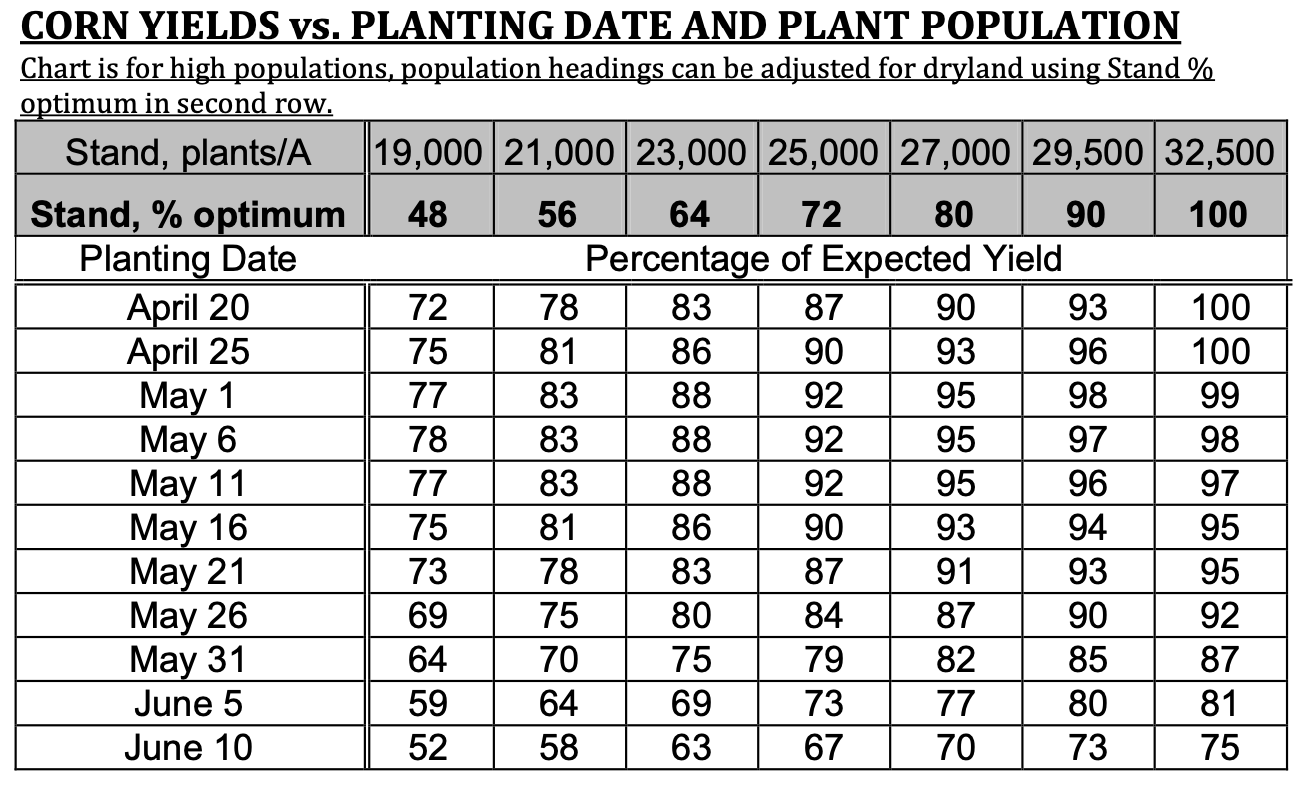
Determining Yield Loss Due to Defoliation
Yield reduction from hail damage in corn due is also a result of the loss of photosynthetically active leaf area. How severe that reduction is likely to be depends on not only the amount of leaf area removed, but also the corn’s growth stage when hail occurs.
First determine the stage of growth of the damaged plants. The next step is to estimate percent of leaf area destroyed per plant. Live green tissue remaining on the plant, even though mutilated, should not be considered as leaf area destroyed. With the corn growth stages established and amount of leaf area loss estimated, use the table on the next page to determine likely yield reduction from defoliation.
As was mentioned earlier, add the expected yield loss caused by stand reduction, the expected loss caused by defoliation, and the expected loss caused by direct ear damage to determine total estimated yield loss when evaluating hail damage.
If Replanting Is Deemed Necessary
If you choose to replant, hybrid maturity and date of flowering are important. Stay with as full of season hybrid as possible. Choose hybrids that flower and grain fill early, therefore beating early frost, but also provide some top end potential. Avoid hybrids for replant that flower and grain fill late. Hybrids such as these are more easily hurt by early season frost.
Also remember to consider the herbicides which have already been applied to the field. Look at required delayed times before replanting and the type of crops which may be planted after the herbicides used. Again, ask your Dyna-Gro Seeds crop consultant or agronomist for advice.
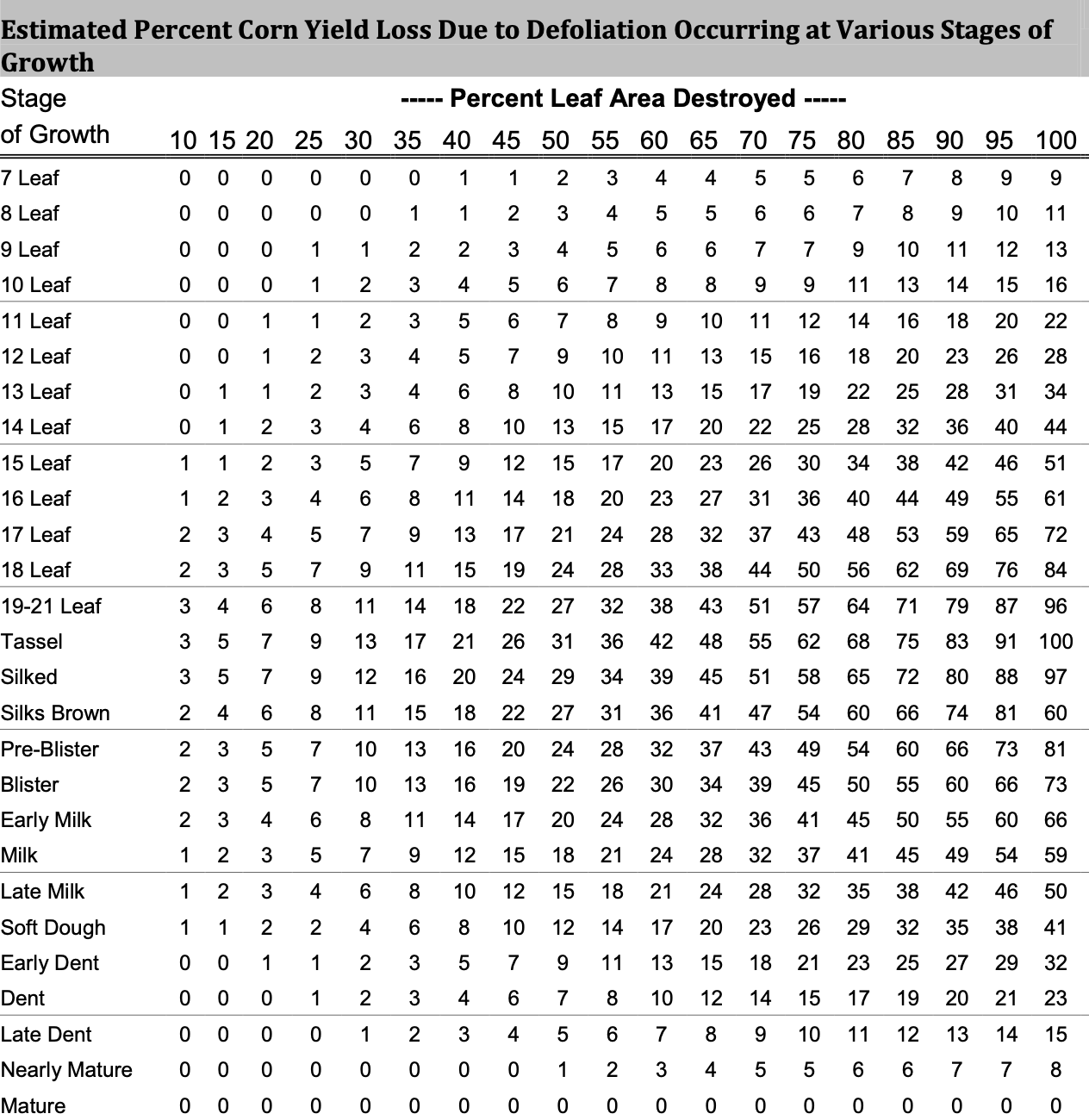
How to Manage Fields with Hail Damage Not Replanted
Often times fields that have suffered hail damage that are not replanted require special treatment or close monitoring throughout the rest of the growing season. For example, if the plant has been bruised and stressed it probably will not be able to handle other stresses as well. Drought stress may not be as good as normal, if under irrigation, water as timely as possible.
Bruising or tears in the plant may provide avenues for stalk rots; meaning combining needs to be done earlier. As with any situation, favorable weather during the rest of the growing season may provide better yields than expected and less than desirable weather may lead to a poorer crop than expected.
Soybeans
Yield loss predictions are based on two factors:
- Stage of growth at the time of damage, and
- The degree of plant damage.
Plant damage is classified as leaf defoliation, stand reduction, stem damage, and pod damage. To calculate actual soybean yield loss due to hail, several factors should be considered. Actual soybean loss due to hail is the sum of direct damage and plant damage loss. Direct damage is the sum of the yield losses from stand reduction and pod damage. The plant damage — the sum of losses due to stem cutoff, broken over and defoliation — is multiplied by the remaining percent stand to find the plant damage loss. At the current stage of plant development, there is a direct relationship between loss of plant stand and loss of yield. A 1% loss in plant stand translates to a 1% loss in yield. See chart on following page for a chart to calculate estimated yield loss.

Sorghum
In the short run, sorghum is apt to recover well from severe hail. Generally its leaves are more flexible and tend to sustain less severe damage; however, recovery may have other challenges. A perennial, sorghum will try to compensate for plant injury by sending out new suckers, all of which can lead to new heads of grain, all at different levels of maturity. While the primary head may ripen much as planned, secondary heads may still be green, creating a variety of maturity levels. If stems are healthy, producers may choose to delay harvest until frost or the majority of the crop is mature.
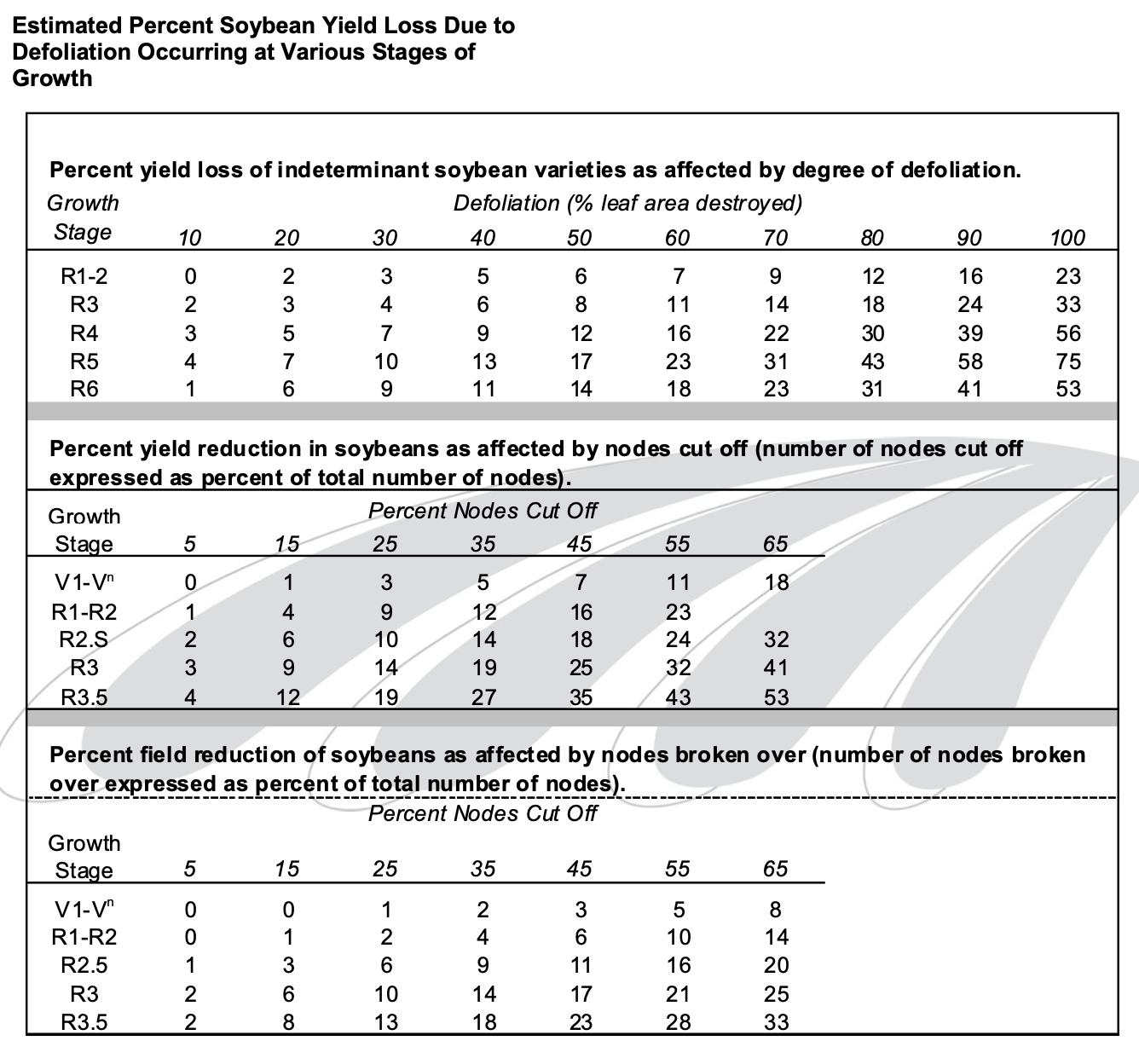

Products Nutrition Recommendations on Hail Damaged Crops
Treatment on Hail Damaged Corn
- 1 gallon N-Pact per acre
- 1 quart. Awaken per acre
- 2 ounces Radiate per acre
- 1 pint per 100 gallon of LI700
- Apply with 10 gallons of water per acre
- Timing - 7 days after the Hail hits or once new growth has begun
Treatment on Hail Damaged Soybeans
- 2 quarts Awaken per acre
- 2 ounces Radiate per acre
- 1 pint per 100 gallon of LI700
- Apply with 10 gallons of water per acre
- Timing - 7 days after the Hail hits or once new growth has begun
©Copyright 2015. This information may have been accumulated from publicly available sources outside of Dyna-Gro Seeds, or its affiliates. Individual results may vary, and performance may vary from location to location and from year to year. This result may not be an indicator of results you may obtain as local growing, soil and weather conditions may vary. Dyna-Gro® is a registered trademark of Loveland Products, Inc. Featured logos are service/trademarks of their respective owners.
